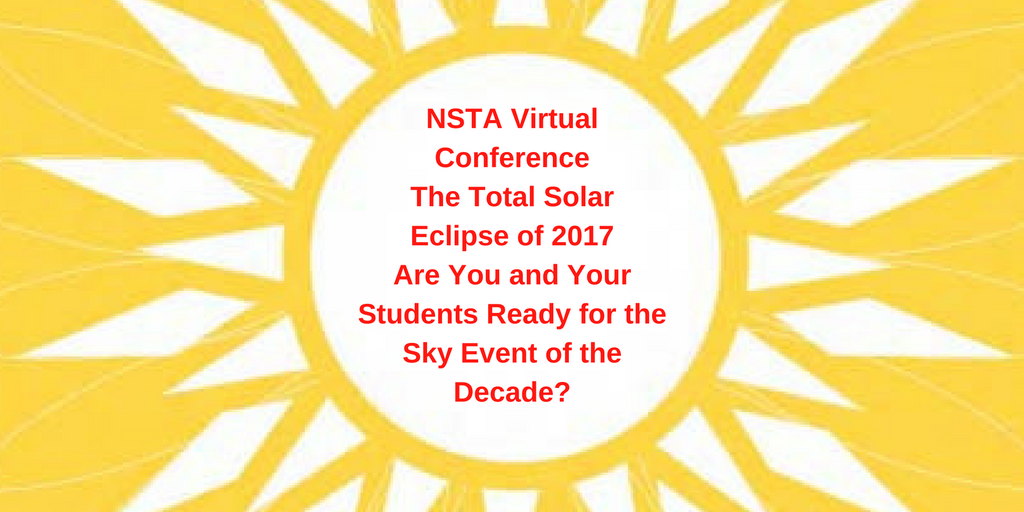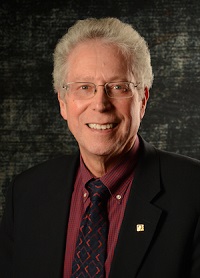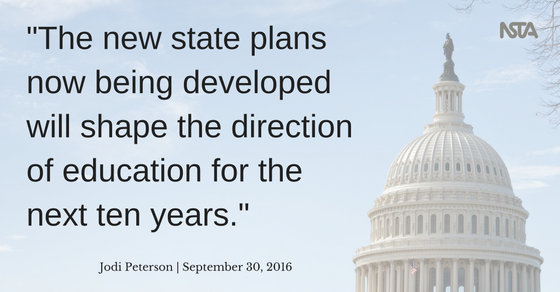Next time you want to see a show, go outside and look at the sky. The clouds will put on a show for you with their ever-changing shapes and sizes. This book reveals some fascinating science behind these beautiful displays. Author Emily Morgan answers all kinds of questions: What are clouds made of? Why are some clouds white? Which clouds mean fair weather is coming, and which ones mean rain is on the way? If you could reach those fluffy, floaty puffs, could you jump on them like a trampoline?
Next time you want to see a show, go outside and look at the sky. The clouds will put on a show for you with their ever-changing shapes and sizes. This book reveals some fascinating science behind these beautiful displays. Author Emily Morgan answers all kinds of questions: What are clouds made of? Why are some clouds white? Which clouds mean fair weather is coming, and which ones mean rain is on the way? If you could reach those fluffy, floaty puffs, could you jump on them like a trampoline?
Next time you want to see a show, go outside and look at the sky. The clouds will put on a show for you with their ever-changing shapes and sizes. This book reveals some fascinating science behind these beautiful displays. Author Emily Morgan answers all kinds of questions: What are clouds made of? Why are some clouds white? Which clouds mean fair weather is coming, and which ones mean rain is on the way? If you could reach those fluffy, floaty puffs, could you jump on them like a trampoline?
Next time you want to see a show, go outside and look at the sky. The clouds will put on a show for you with their ever-changing shapes and sizes. This book reveals some fascinating science behind these beautiful displays. Author Emily Morgan answers all kinds of questions: What are clouds made of? Why are some clouds white? Which clouds mean fair weather is coming, and which ones mean rain is on the way? If you could reach those fluffy, floaty puffs, could you jump on them like a trampoline?
Chasing bubbles
By Peggy Ashbrook
Posted on 2016-09-30
 As the weather turns colder with the changing season, some children come to school without enough layers to be warm during outside playtime. Games and engaging activities can keep children moving, warming them as they stay active. Blowing and chasing bubbles encourages children to stay in motion. If the bubble solution you bought last summer is not holding up and bubbles don’t last, try making your own solution.
As the weather turns colder with the changing season, some children come to school without enough layers to be warm during outside playtime. Games and engaging activities can keep children moving, warming them as they stay active. Blowing and chasing bubbles encourages children to stay in motion. If the bubble solution you bought last summer is not holding up and bubbles don’t last, try making your own solution.
The most widely recommended solution combines water, liquid dish detergent, and glycerine. Some recipes call for adding corn syrup or other form of sugar but it may leave a sticky residue. Many recipes call for Dawn dishwashing liquid to make the longest lasting bubbles.
 Materials Safety Data Sheets list the necessary safety information for products such as soap and glycerin. These products do not require any special precautions, however, guided by the experience of getting soap in my eyes, I encourage children to wear goggles while mixing bubble solution or if they fling it about when working hard to make bubbles.
Materials Safety Data Sheets list the necessary safety information for products such as soap and glycerin. These products do not require any special precautions, however, guided by the experience of getting soap in my eyes, I encourage children to wear goggles while mixing bubble solution or if they fling it about when working hard to make bubbles.
Blowing bubbles is both fun and an experience with a natural phenomena. The National Wildlife Federation’s Family Fun pages suggests we use bubbles as a way to tell which direction the wind is blowing from in the “Watch Weather” activity. Scientific American describes how to do a fair test of 3 different recipes in “Blow the Best Bubbles: A soapy chemistry challenge from Science Buddies.” Spoiler alert! Don’t read to the end of their column until you do your own test and have thought about your own results. The Exploratorium in San Francisco is a “public learning laboratory exploring the world through science, art, and human perception.” Their resources include hands-on, teacher-tested Science Snacks such as the “Bubble Tray,” and a page of bubble formula.
See the delight a child feels at being a competent bubble-blower on The Regents’ Center for Early Developmental Education (CEESTEM) at the University of Northern Iowa short video. The CEESTEM’s “Bubble” page shares many ideas for investigating bubbles and offers safety tips.
Bubble blowing is favored by occupational and speech therapists as a fun and productive activity for children. Share your bubble experiences with the families of your students so they can explore bubble formation scientifically, like the family in ExpeRimental’s video, “Giant Bubbles,” brought to you by the Royal Institution of Great Britain.
 Children of all ages can enjoy watching, making and altering bubbles. Preschoolers can explore what happens to a bubble solution when either salt, sugar, honey or paint is added. The Colorado Department of Education, Colorado State Library has pages on bubble activities for people from babies to adults. Children enjoy using electric mixers as part of my newest favorite bubble play—making foam! See the Early Years column, “Blowing Bubbles” in the January issue of Science and Children for more about ways to make and explore foam.
Children of all ages can enjoy watching, making and altering bubbles. Preschoolers can explore what happens to a bubble solution when either salt, sugar, honey or paint is added. The Colorado Department of Education, Colorado State Library has pages on bubble activities for people from babies to adults. Children enjoy using electric mixers as part of my newest favorite bubble play—making foam! See the Early Years column, “Blowing Bubbles” in the January issue of Science and Children for more about ways to make and explore foam.
While the mechanics and chemistry of bubbles is fascinating, young children gain the most information in a developmentally appropriate way through experience.
Are You Planning Schoolwide or Community-Wide Programs for the August 2017 Solar Eclipse
By Guest Blogger
Posted on 2016-09-30
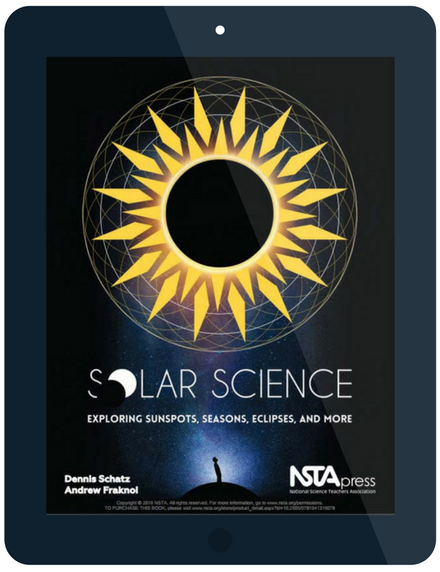 Andrew Fraknoi and I, co-authors of the new NSTA Press book Solar Science: Exploring Sunspots, Seasons, Eclipses and More, want to learn more about what teachers plan to do for the August 21, 2017, eclipse. We are specifically interested in learning about teachers who plan to encourage their students to provide programming (e.g. showing safe observing techniques, demonstrating what causes eclipses) for other students in the school, or for members of the community. Please send a brief description of your plans to Dennis Schatz at schatz@pacsci.org if you will be doing schoolwide or community-wide programs. We plan to produce a resource guide of good ideas for educators who want to serve their schools and community in this way. (If the eclipse is not yet on your radar, you can read more about it in NSTA’s free booklet.)
Andrew Fraknoi and I, co-authors of the new NSTA Press book Solar Science: Exploring Sunspots, Seasons, Eclipses and More, want to learn more about what teachers plan to do for the August 21, 2017, eclipse. We are specifically interested in learning about teachers who plan to encourage their students to provide programming (e.g. showing safe observing techniques, demonstrating what causes eclipses) for other students in the school, or for members of the community. Please send a brief description of your plans to Dennis Schatz at schatz@pacsci.org if you will be doing schoolwide or community-wide programs. We plan to produce a resource guide of good ideas for educators who want to serve their schools and community in this way. (If the eclipse is not yet on your radar, you can read more about it in NSTA’s free booklet.)
Thanks for your help.
Dennis Schatz and Andrew Fraknoi
P.S. If you are still trying to determine what to do to prepare your students to experience the eclipse, you may want to participate in NSTA’s Virtual Conference: Total Solar Eclipse of 2017 – Are You and Your Students Ready for the Sky Event of the Decade?
Dennis Schatz was for many years the Senior Vice President of the Pacific Science Center in Seattle, and is the author of 23 science books for children. He was program director for science education at the National Science Foundation from 2011 to 2015, before returning to Pacific Science Center as Senior Advisor. (See www.dennisschatz.org for more information.)
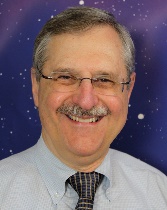 Andrew Fraknoi is the Chair of the Astronomy Department at Foothill College in the San Francisco Bay Area and a former Executive Director of the Astronomical Society of the Pacific. He is the lead author of a college astronomy textbook and appears frequently on local and national radio programs explaining astronomical developments.
Andrew Fraknoi is the Chair of the Astronomy Department at Foothill College in the San Francisco Bay Area and a former Executive Director of the Astronomical Society of the Pacific. He is the lead author of a college astronomy textbook and appears frequently on local and national radio programs explaining astronomical developments.
Solar Science is published by NSTA Press and is available in the NSTA Science Store.
The mission of NSTA is to promote excellence and innovation in science teaching and learning for all.
Future NSTA Conferences
-
2016 Area Conferences
2016 National Conference
Follow NSTA
Legislative Update
ESSA, Money, and More
By Jodi Peterson
Posted on 2016-09-30
FY2017 Appropriations: Congress passed a stopgap spending measure on Wednesday, September 28—two whole days before the September 30 midnight deadline that would have shut down the federal government—that will maintain current funding levels for federal education programs and keep the government open until December 9.
Members of Congress have left town and are back home to campaign for the November 8 election. When the lame duck Congress returns after the election, job one will be to finalize a FY2017 spending bill before the continuing resolution on December 9 runs out.
In anticipation of final Congressional action on FY2017 appropriations bills the NSTA, several state science groups, and other members of the Title IV Coalition recently sent this letter to Senate appropriators, requesting full funding for the Every Student Succeeds Act (ESSA) Title IV in the final bill. As reported in earlier Legislative Updates, the House of Representatives Appropriations Committee approved $1 billion for the ESSA Title IV block grants in their FY2017 Labor HHS and Education spending bill. This amount is $500 million above the President’s budget request and $700 million above the Senate funding ($300m). The program is authorized at $1.65 billion.
ESSA Title IV provides funding to both states and districts so they may provide students with programs (including STEM programs) that ensure a well-rounded education. Read more about Title IV.
Every Student Succeeds Act (ESSA) Implementation—What’s in Your State? Per the new federal education law, state and district leaders must engage in meaningful consultation with a broad range of stakeholders including families, students, educators, private school officials, and community partners when developing state accountability plans and deciding on the use of ESSA funding. States are required to submit their individual plans for ESSA by March, so there will be a lot of activity in the coming months as state boards of education and governors review and discuss state plans. Many believe that the new state plans now being developed will shape the direction of education for the next ten years. Do you know what your state is doing in preparation for ESSA? Teachers and especially state and district leaders are urged to find out more and get involved early; here is a great resource on ESSA and a state activity map: http://understandingessa.org/state-activity/.
ED Issues Guidance on ESSA Title II—Earlier this week the Education Department released guidelines on how states and school districts can use federal funding under the ESSA Title II to better support teachers. The guidance addresses ways states and districts can use Title II, Part A funds to support
- Multiple Pathways to Teaching and Leading;
- Induction and Mentorship;
- Meaningful Evaluation and Support;
- Strong Teacher Leadership; and
- Transformative School Leadership;
Title II grants go to every state, which in turn are required to provide up to 94 percent of the funding as subgrants to local districts for programs that support teachers and schools leaders. Districts can elect to use the funds to “provide professional development and other comprehensive systems of support for teachers, principals, or other school leaders to promote high-quality instruction and instructional leadership in science, technology, engineering, and mathematics subjects.” The Title II A guidance calls for “significant teacher input into the application and planning process for local subgrants (districts). This approach would give educators, parents and community members a meaningful role in determining the best use of program funds to both improve professional practice and help make schools great places to work.” (Watch for a deeper dive on this in future Legislative Updates.)
Webinar on ESSA: Need to know more about ESSA? Join NSTA, state leaders, teachers, and STEM professionals for a 90 minute joint webinar on the new federal education law and its impact on K-12 STEM education, Wednesday, October 5 at 6:30 pm. Speakers during this interactive webinar–co-sponsored by the NSTA, the STEM Education Coalition, and STEMx—will discuss key STEM provisions in the Every Student Succeeds Act, and how stakeholders can help to advocate and support continued STEM learning in their communities. Learn more about the webinar and register here.
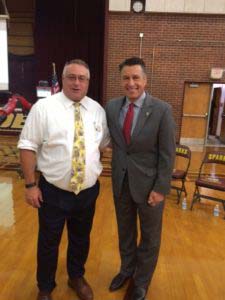
And finally . . .
Governor Brian Sandoval signed a proclamation declaring the 2016–2017 school year the ‘Year of STEM education’ in Nevada during a recent visit to Sparks High School. NSTA President-elect Dr. David Crowther was at the launch of the statewide initiative, where Gov. Sandoval also introduced various ways for students, families and educators to actively participate. Learn more about the initiative here.
Jodi Peterson is Assistant Executive Director of Legislative Affairs for the National Science Teachers Association (NSTA) and Chair of the STEM Education Coalition. e-mail Peterson at jpeterson@nsta.org; follow her on Twitter at @stemedadvocate.
Follow NSTA
But this is more than just a pretty storybook. It sparks curiosity about the parts of a flower and the vital roles of bees and seeds in plant reproduction.
But this is more than just a pretty storybook. It sparks curiosity about the parts of a flower and the vital roles of bees and seeds in plant reproduction.
Celebrate imagination! This NSTA Kids book has been selected for the Children’s Book Council #ImaginationCelebration Showcase! Full book list: Imagination Celebration Showcase
Named an Outstanding Science Trade Book for Students K-12!
Celebrate imagination! This NSTA Kids book has been selected for the Children’s Book Council #ImaginationCelebration Showcase! Full book list: Imagination Celebration Showcase
Named an Outstanding Science Trade Book for Students K-12!
Spark Science Learning Through Children’s Trade Books
By Claire Reinburg
Posted on 2016-09-28
 |
|
| Research points to the benefits to student learning that come from teaching reading in the content areas, such as in science class. The National Research Council noted in a summary report of their workshop Literacy for Science that “when students have a reason to read, a reason to learn terminology, and compelling and interesting content, their level of engagement increases, as well as their stamina and cognitive effort.” Give your students new reasons to read by incorporating captivating science texts in your lessons. Add the newest NSTA Kids books or selections from NSTA’s annual list of Outstanding Science Trade Books for Students, K–12 to your classroom library this fall. | |
Explore New NSTA Kids Books |
|
| Notable Notebooks: Scientists and Their Writings, by Jessica Fries-Gaither, will inspire young scientists with its colorful and lively glimpses inside the notebooks of famous scientists such as Galileo and Jane Goodall. After learning the many ways scientists use their notebooks to sketch observations, record data, or jot their thoughts, students can follow the four steps provided to launch their own journals of discovery. Browse sample pages of this fascinating new children’s book from one of the authors of NSTA’s award-winning elementary-level book Inquiring Scientists, Inquiring Readers. | 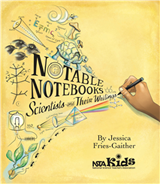 |
| From Flower to Fruit, by Richard and Kathleen Konicek-Moran, draws readers in with the twin charms of rich illustrations and an engaging narrative to explore the mysteries of how seeds become plants and the importance of flowers in every ecosystem. Six kid-friendly activities and background information for parents and teachers complement the text. See these sample pages to glimpse the wonders awaiting budding botanists in this new resource. Richard Konicek-Moran is author of the popular NSTA Press series Everyday Science Mysteries. |  |
| Next Time You See a Cloud, by Emily Morgan, reveals some fascinating science behind the beautiful displays of ever-changing clouds we see in the sky. The book answers all kinds of questions: What are clouds made of? Why are some clouds white? Which clouds mean fair weather is coming, and which ones mean rain is on the way? Take a look inside at the beautiful photos and detailed information conveyed in this new book in the award-winning Next Time You See series. | 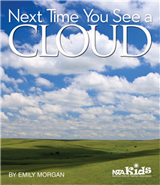 |
| For additional science resources for curious kids, explore more books in the award-winning NSTA Kids series. And be sure to check out the extensive list of Outstanding Science Trade Books for Students, K–12, selected each year by NSTA and the Children’s Book Council. | |
| NSTA Press also provides a wealth of lessons on how to incorporate children’s trade books and other texts into science class through the Picture-Perfect Science series; Teaching Science Through Trade Books; Inquiring Scientists, Inquiring Readers for elementary grades; the forthcoming Inquiring Scientists, Inquiring Readers in Middle School; Once Upon a Life Science Book; and Once Upon an Earth Science Book. | |
Special Fall Savings From NSTA Press |
|
|
Between now and November 1, 2016, save $15 off your order of $75 or more of NSTA Press books or e-books by entering promo code BKS16 at checkout in theonline Science Store. Offer valid only on orders placed for NSTA Press books or e-books on the web and may not be combined with any other offer. NSTA’s Book Beat is also emailed as a monthly e-newsletter designed to keep NSTA Press® readers, and the wider audience of science teachers, informed about books and teacher resources available through the National Science Teachers Association. Each month’s issue highlights selected topics in science education and new content in NSTA Press books with links to free sample chapters and lessons. NSTA’s Book Beat also informs readers of special offers and discounts available through the NSTA Science Store. Click here to view past issues or to sign up to receive future issues. |
|
 |
|
| Research points to the benefits to student learning that come from teaching reading in the content areas, such as in science class. Subscribe to |



